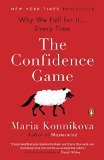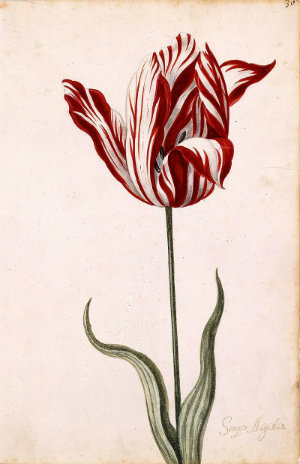Summary | Excerpt | Reviews | Beyond the Book | Read-Alikes | Genres & Themes | Author Bio

Why We Fall for It ... Every Time
by Maria KonnikovaThis article relates to The Confidence Game
Since the beginning of time, humanity has been enchanted by – and paid a small fortune to possess – rare and beautiful objects: diamonds, gold, emeralds…and tulips.
At the peak of the "Great Dutch Tulip Mania of 1637," an event which is covered in The Confidence Game, the most desirable tulip bulbs commanded outrageous sums of money. This floral-infatuation inflation led to the first recorded "economic bubble" – an overvalued and unsustainable market for a product – and was fueled by many of the same strategies con artists use to entice their targets today.
"The line between bubble and con can be a very fine one," argues Maria Konnikova. "They operate on many of the same principles, occur for many of the same reasons, and are so incredibly persistent."
And this one was a doozy. According to Konnikova, "So desired were the flowers, and so high their price, that in the 1630s a sailor was jailed for mistaking one for an onion and eating it."
 The tulip, which is named for the Turkish word for "turban," had only recently been introduced into Europe from Central Asia and its unexpected variety and intensity in color seem to have cast a spell over the Dutch. As one historian explained, "It is impossible to comprehend the tulip mania without understanding just how different tulips were from every other flower known to horticulturists in the seventeenth century."
The tulip, which is named for the Turkish word for "turban," had only recently been introduced into Europe from Central Asia and its unexpected variety and intensity in color seem to have cast a spell over the Dutch. As one historian explained, "It is impossible to comprehend the tulip mania without understanding just how different tulips were from every other flower known to horticulturists in the seventeenth century."
That rarity led speculators to enter the market, buying the bulbs and then hoping to turn around and sell them for more money. During the bubble, bulbs commanded huge prices at auction. A tulip bulb could easily sell for more than 4,000 florins. (By contrast, a farmer could buy a dozen sheep for 120 florins, or a bed for 100 florins). At the height of the bubble – that is, as sellers were continuing to con people into buying tulips at outrageous prices on the prospect of even higher prices tomorrow – bulbs sold for many times the average annual salary of a craftsperson in Amsterdam.
"In the weeks before the crash, Semper Augustus [a particularly desirable type of tulip bulb] sold for the cost of a luxury house in Amsterdam. In February, the market crashed. Such is the nature of speculation," notes Konnikova. All those investors who were so sure of an easy turnaround found that their get-rich-quick dreams had suddenly morphed into the familiar nightmare of the conned. It's a lesson that many people even today, according to Konnikova, have yet to learn: "Take the stock market. We have reams and reams of data on its performance over time – charts, trends, cycles of boom and bust, expected returns, and the like. But when things are going well, it's tough to convince the savviest of investors that they may soon enough turn south…it's one of the reasons that, time and again, bubbles will swell – in the markets on the whole, or in certain sectors – and then, just as fabulously, burst."
Anonymous 17th-century watercolor of the Semper augustus, famous for being the most expensive tulip sold during tulip mania, from Norton Simon Museum
Filed under Cultural Curiosities
![]() This "beyond the book article" relates to The Confidence Game. It originally ran in February 2016 and has been updated for the
January 2017 paperback edition.
Go to magazine.
This "beyond the book article" relates to The Confidence Game. It originally ran in February 2016 and has been updated for the
January 2017 paperback edition.
Go to magazine.






Your guide toexceptional books
BookBrowse seeks out and recommends the best in contemporary fiction and nonfiction—books that not only engage and entertain but also deepen our understanding of ourselves and the world around us.